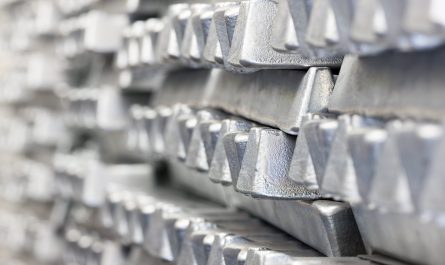What are Bioceramics?
Biochemical refer to ceramics that are biocompatible and capable of withstanding biological environments. They can be classified based on their composition and usage. The main types of biochemical include bioinert, bioactive and biodegradable ceramics.
Bioinert biochemical such as alumina and zirconia do not interact with surrounding tissues. They are mainly used for applications that demand high strength, hardness and corrosion resistance like articulating surfaces in hip and knee replacements. As they do not bond to living tissues, a fibrous soft tissue capsule forms around them over time.
Bioceramics like hydroxyapatite and glass ceramics form a strong chemical bond to living tissues through the formation of bone-like apatite layers when implanted in the body. They are frequently used as bone graft substitutes and coatings on metal implants to promote osseointegration. Their excellent osteoconductivity aids new bone growth at the implant interface.
Biodegradable ceramics made from calcium phosphates and polyesters degrade and dissolve gradually after implantation as new bone replaces them. They are commonly employed as temporary drug delivery and tissue engineering scaffolds needing no later removal. Their degradation rate can be tailored as per the application.
Uses of Bioceramics in Orthopedics
Orthopedic implants fabricated from biochemical have revolutionized bone repair and joint replacement procedures. Hydroxyapatite coatings on titanium and stainless steel implants significantly augment the implant’s integration with surrounding hard and soft tissues.
Bioceramics artificial joints deliver enduring pain relief to millions suffering from arthritis and other joint conditions. Alumina and zirconia ceramic heads provide excellent wear resistance in hip implants. Recently developed multi-layer bioactive glass ceramic coatings on metal implants shield them from corrosion while promoting osseointegration.
Calcium phosphate biochemical in the form of granules, putties or fibrous meshes serve as the gold standard bone grafts for filling small to large skeletal defects. When implanted, they attract body fluids, remodel into bone and support new healthy bone ingrowth in place of damaged tissue.
Dental and maxillofacial applications of biochemical include filling of defects caused by trauma, tumors or abnormalities. As scaffold materials for tissue engineered bone constructs, biodegradable polymer-ceramic composites induce regeneration of complex craniofacial structures.
Development of Advanced Bioceramic Formulations
Progress in materials science and nanotechnology is ongoing to design better performing bioceramic materials. Nanophase hydroxyapatite particulates closely replicate the structural and compositional properties of natural bone mineral. They exhibit excellent biocompatibility for bone ingrowth.
Antibacterial biochemical doped with agents such as silver, zinc or cerium oxide curb implant infections. Photodynamic biochemical activated by light help destroy tumor cells or treat periodontal disease. Piezoelectric biochemical that generate electrical signals in response to motion offer promise for bone regeneration under dynamic loading conditions.
Composite biochemical blending hydroxyapatite with polymers achieve an ideal compromise of bioactivity, toughness and processability. Resorbable calcium silicate and calcium carbonate biochemical offer controlled degradation for temporary drug delivery or bone void filling roles. 3D printing methods portray great potential for fabricating anatomically accurate porous bioceramic implants and scaffolds.
Challenges in Clinical Translation
While biochemical have revolutionized orthopedic and dental implantology to a large extent, certain challenges persist. Improving the fatigue resistance of bioinert ceramics continues to be addressed through compositional and structural modifications. Optimization of biodegradation rates based on anatomical site remains an active area of research for resorbable biochemical.
Stricter evaluation of long-term in vivo performance parameters like aging effects, ion leaching and susceptibility to third body wear is essential prior to widespread commercialization of new variants. High manufacturing costs also limit scaling up of advanced biomimetic bioceramic designs made by methods like additive manufacturing or nanotechnology.
standardization of preclinical testing paradigms assessing biocompatibility, mechanical integrity and osseointegrating ability will help faster translation. Overcoming regulatory barriers through well-designed clinical trials continues to be important. With sustained multidisciplinary efforts, biochemical will transform healthcare by restoring form and function of failing bones and joints.
About Author:
Ravina Pandya, Content Writer, has a strong foothold in the market research industry. She specializes in writing well-researched articles from different industries, including food and beverages, information and technology, healthcare, chemical and materials, etc. (https://www.linkedin.com/in/ravina-pandya-1a3984191)
*Note:
1. Source: Coherent Market Insights, Public Source, Desk Research
2. We have leveraged AI tools to mine information and compile it.




